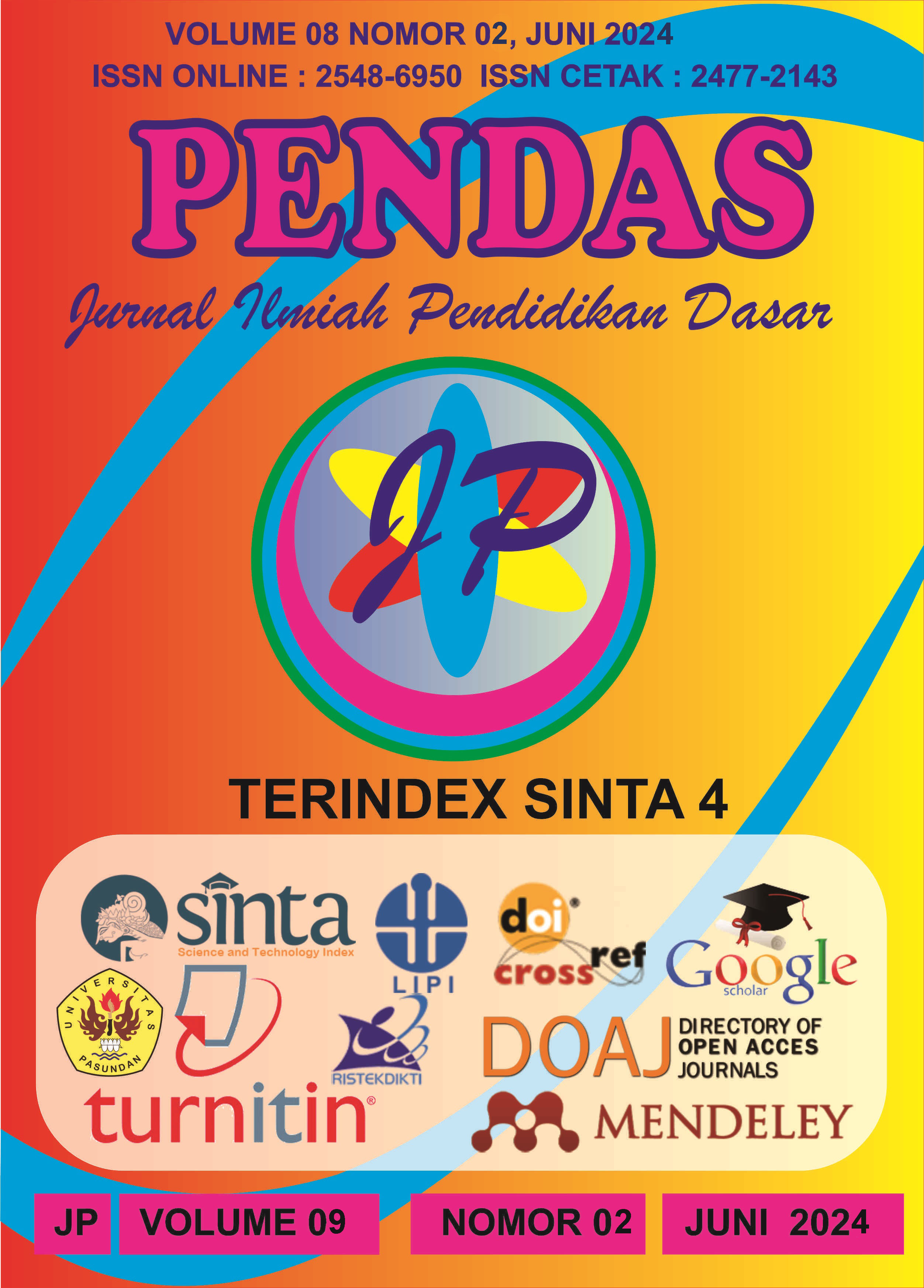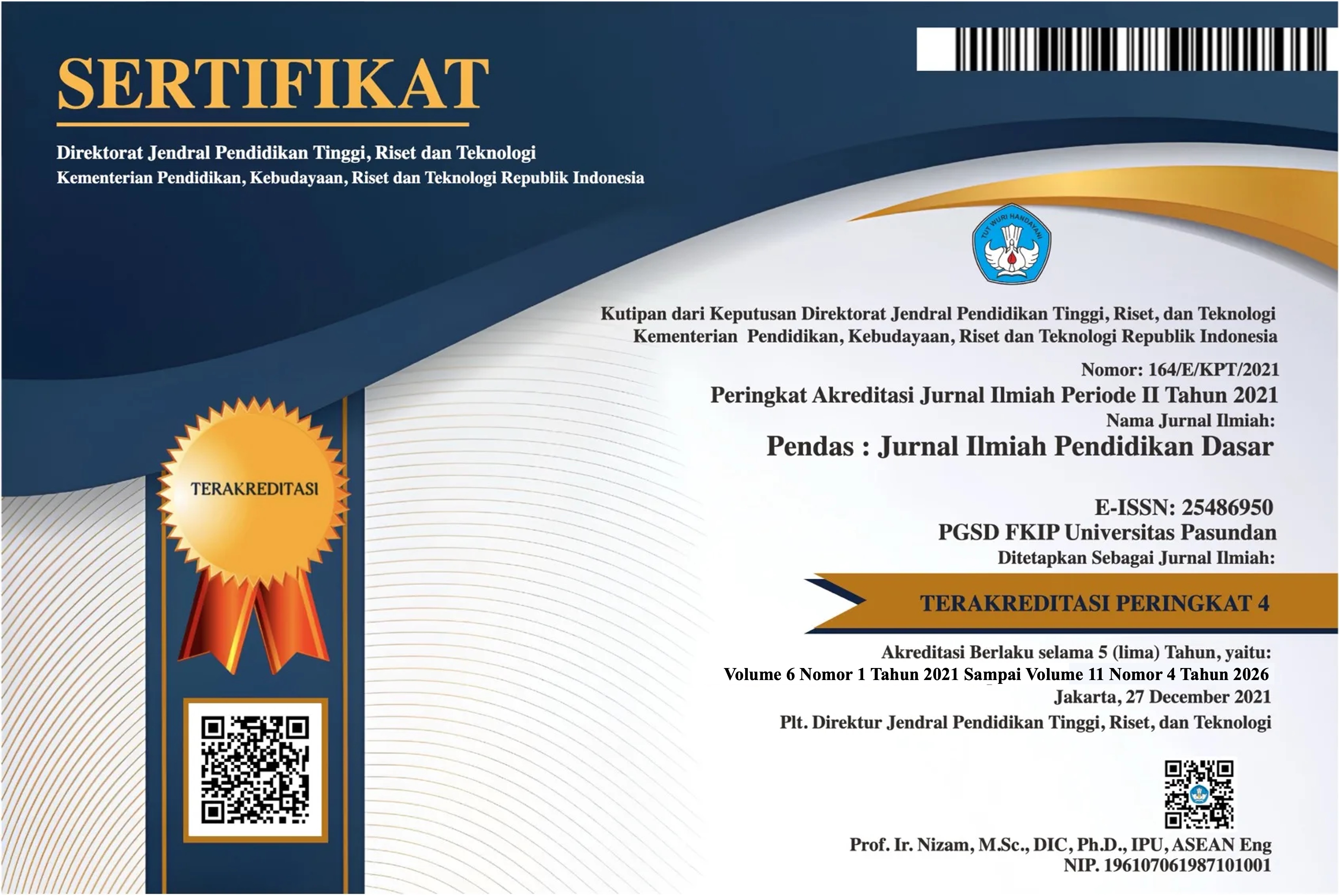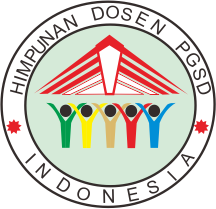PENINGKATAN SIKAP KOLABORATIF PESERTA DIDIK PADA PEMBELAJARAN IPAS KELAS IV MELALUI MODEL PEMBELAJARAN KOOPERATIF METODE TWO STAY TWO STRAY (TSTS)
DOI:
https://doi.org/10.23969/jp.v9i2.14859Keywords:
Cooperative, Two Stay Two Stray (TSTS), IPAS, Collaborative, Learning ModelAbstract
The aim of this research is to improve students' collaboration skills through the Two Stay Two Stray (TSTS) type cooperative learning model in Science and Nature subjects (IPAS). From the results of initial observations carried out in class IV in science and science learning, there were findings that students had not demonstrated collaboration skills with other students. This research uses classroom action research methods. The subjects in this research were 27 students in class IV A of SD Muhammadiyah 2 Kauman Surakarta. The research instruments used were student evaluation sheets and worksheets. The data analysis technique uses qualitative techniques. To determine the improvement of students, it is carried out in stages in 2 cycles. Based on the research results, it can be concluded that class IV science learning by implementing the Two Stay Two Stray (TSTS) type cooperative model is considered to be able to increase students' cooperative activities. The results of the research showed that there was an increase made in cycles I and cycle II in percentages. This was proven by the students' behavior in the second cycle showing more cooperation between group members.Downloads
References
Aji, T. P., & Wulandari, S. S. (2021). Analisis Model Pembelajaran Kooperatif Tipe Two Stay Two Stray (TSTS) Terhadap Hasil Belajar Siswa. Journal of Office Administration : Education and Practice, 1(3), 340–350. https://doi.org/10.26740/joaep.v1n3.p340-350
Astuti, A. P., Maftuhah Hidayati, Y., Untari, R., & Kunci, K. (2022). Penerapan Metode Pembelajaran Two Stay Two Stray Berbasis Peta Konsep Untuk Meningkatkan Hasil Belajar IPA. Educatif : Journal of Education Research, 4(3), 168–175. http://pub.mykreatif.com/index.php/educatif
Azizah, A. (2021). Pentingnya Penelitian Tindakan Kelas Bagi Guru dalam Pembelajaran. Auladuna : Jurnal Prodi Pendidikan Guru Madrasah Ibtidaiyah, 3(1), 15–22. https://doi.org/10.36835/au.v3i1.475
Darmawan, W., & Harjono, N. (2020). Efektivitas Problem Based Learning dan Two Stay Two Stray dalam Pencapaian Hasil Belajar. Jurnal Basicedu, 4(2), 402–411. https://doi.org/10.31004/basicedu.v4i2.364
Fitri, A. A., & Pertiwi, F. N. (2023). Efektivitas Model Pembelajaran Two Stay Two Stray (TSTS) Berbasis Teacher and Peer Feedback terhadap Kemampuan Refleksi Peserta Didik. Jurnal Tadris IPA Indonesia, 3(3), 238–251. https://doi.org/10.21154/jtii.v3i3.2166
Givari, A., Patongai, S., & Asia, N. (2023). Penerapan Model Pembelajaran Two Stay Two Stray Berbantukan Media Pembelajaran TTS untuk Meningkatkan Hasil Belajar Biologi di SMA Negeri 5 Jeneponto. Jurnal Pemikiran Dan Pengembangan Pembelajaran , 5(2), 70-77. https://doi.org/https://doi.org/10.31970/pendidikan.v5i2.543
Handayani, S. L., & Rukmana, D. (2020). Peningkatan Kemampuan Menulis Karya Ilmiah Guru Melalui Pelatihan Penelitian Tindakan Kelas bagi Guru SD. Publikasi Pendidikan, 10(1), 8–13. https://doi.org/10.26858/publikan.v10i1.9752
Hartatik, H. (2014). Implementasi Model Pembelajaran Two Stay Two Stray Berbasis CTL untuk Meningkatkan Hasil Belajar Siswa Kelas IV SD Negeri Karangrejo 2 Dempet Demak. Scholaria : Jurnal Pendidikan Dan Kebudayaan, 4(3), 28–40. https://doi.org/10.24246/j.scholaria.2014.v4.i3.p28-41
Hasanah, Z., & Himami, A. S. (2021). Model Pembelajaran Kooperatif dalam Menumbuhkan Keaktifan Belajar Siswa. Irsyaduna: Jurnal Studi Kemahasiswaaan, 1(1), 1–13. https://doi.org/10.54437/irsyaduna.v1i1.236
Khusnah, A. S., Ghufron, S., Nafiah, N., & Hidayat, M. T. (2021). Pengaruh Penggunaan Model Two Stay Two Stray terhadap Kemampuan Menganalisis Unsur Intrinsik Cerita di Sekolah Dasar. Jurnal Basicedu, 5(5), 3179–3185. https://doi.org/10.31004/basicedu.v5i5.1318
Mirdad, J. (2020). Model – Model Pembelajaran (Empat Rumpun Model Pembelajaran). Jurnal Pendidikan Dan Sosial Islam, 2(1), 14–23. http://www.jurnal.stitnu-sadhar.ac.id
Rofiqoh. (2020). Model Two Stay Two Stray (TSTS) dalam Pembelajaran Matematika Sekolah Dasar. Workshop Nasional Penguatan Kompetensi Guru Sekolah Dasar, 3(3), 2037–2042. https://jurnal.uns.ac.id/shes
Sari, I. P., & Wuriyani, E. P. (2023). Kemampuan Menelaah Struktur dan Kebahasaan Fabel Siswa SMP Menggunakan Model Pembelajaran Two Stay Two Stray (TSTS). Jurnal Basicedu, 7(4), 2011–2020. https://doi.org/10.31004/basicedu.v7i4.5730
Sulaiman. (2014). Model Pembelajaran Cooperative Learning (Suatu Analisis Psikologis Dalam Pembelajaran). Visipena Journal, 5(2), 25–35. https://doi.org/10.46244/visipena.v5i2.258
Sunbanu, H. F., Mawardi, M., & Wardani, K. W. (2019). Peningkatan Keterampilan Kolaborasi Siswa Menggunakan Model Pembelajaran Kooperatif Two Stay Two Stray di Sekolah Dasar . Jurnal Basicedu, 3(4), 2037–2041. https://doi.org/10.31004/basicedu.v3i4.260
Thalib, M. A. (2022). Pelatihan Analisis Data Model dan Huberman untuk Riset Akuntansi Budaya. Madani: Jurnal Pengabdian Ilmiah, 5(1), 23–33. https://doi.org/10.30603/md.v5i1.2581
Wahyuni, S. (2021). Penerapan Model Pembelajaran Two Stay Two Stray untuk Peningkatan Hasil Belajar Keterampilan Diskusi Siswa Kelas X IPA 3 SMA Negeri 3 Singkawang. 10 Secondary : Jurnal Inovasi Pendidikan Menengah, 1(2), 10–18.
Windradi, A. (2022). Peningkatan Keterampilan Kolaborasi Siswa Melalui Penerapan Metode Two Stay Two Stray (TSTS) Pada Materi Jenis - Jenis Masalah Sosial. Jurnal Penelitian Geografi , 910(1), 21–33. https://doi.org/http://dx.doi.org/10.23960/jpg.v10.i1.22617
Yusri, Mantasiah R, & Jufri. (2018). The Use Of Two Stay Two Stray Model In English Teaching To Increase Student’s Learning Outcome. Journal Advanced English Studies, 1(1), 39–43. https://doi.org/http://dx.doi.org/10.47354/jaes.v1i1.12
Downloads
Published
Issue
Section
License
Copyright (c) 2024 Pendas : Jurnal Ilmiah Pendidikan Dasar

This work is licensed under a Creative Commons Attribution 4.0 International License.



















